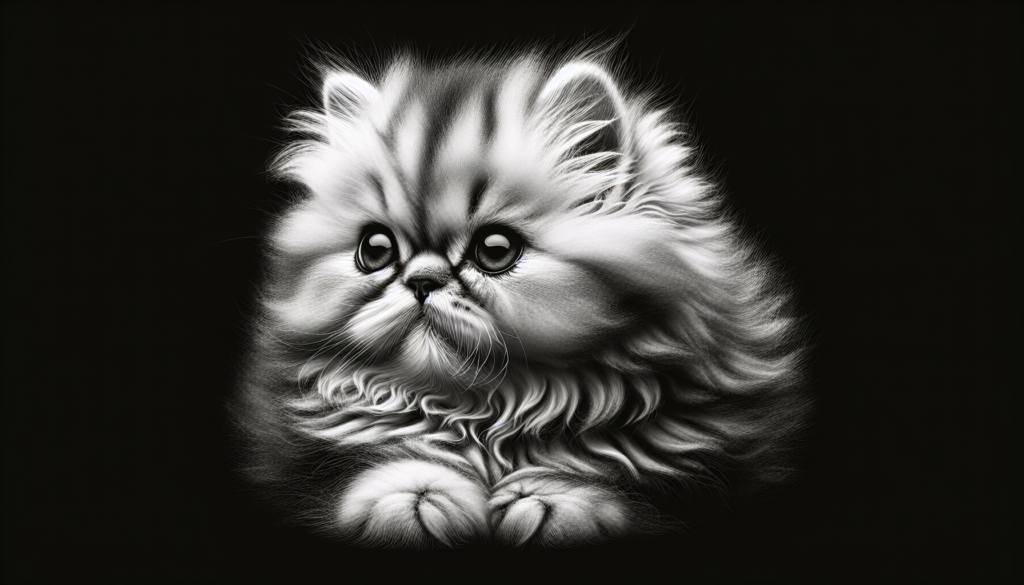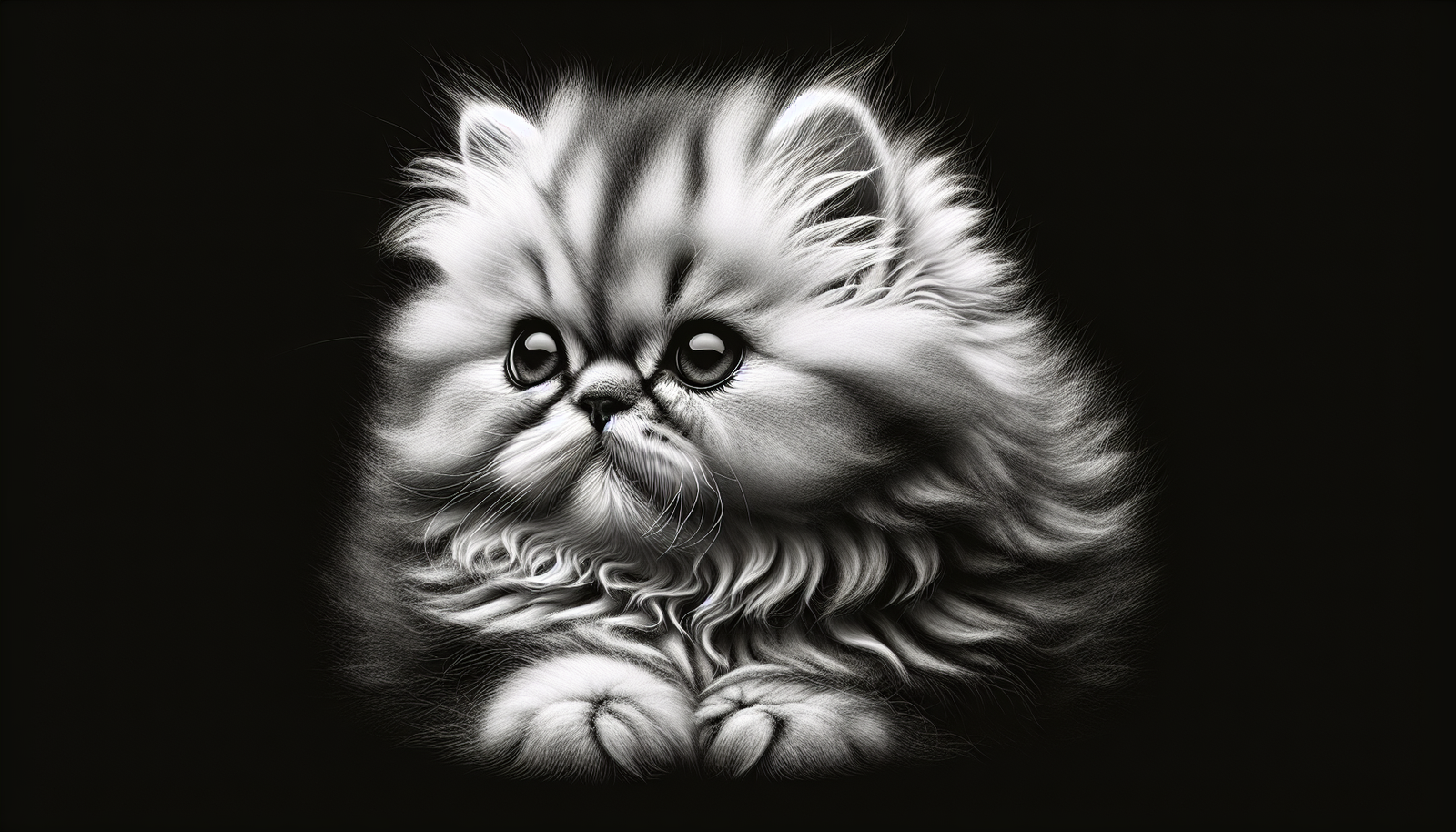So you’re the proud owner of a cute Persian cat, and now you’re wondering, “When do Persian cats stop growing?” As your feline friend continues to charm you with their fluffy coat and adorable demeanor, it’s only natural to be curious about their growth journey. Well, wonder no more! In this article, we’ll explore the timeline of a Persian cat’s growth, shedding light on when you can expect them to reach their full potential. Get ready to unravel the secrets of your Persian companion’s growth cycle!
When do Persian cats stop growing?
Persian cats are known for their luxurious and fluffy coats, captivating round faces, and gentle personalities. If you are lucky enough to have a Persian cat or are considering getting one, you may be wondering about their growth and when they will reach their full size. In this article, we will explore the physical growth of Persian cats, factors affecting their growth, typical growth stages, the growth rate, average size of adult Persians, differences between male and female Persians, signs that they have stopped growing, health considerations during the growth period, and how to promote healthy growth in these majestic felines.

Physical growth of Persian cats
Persian cats undergo several stages of physical development as they grow. When they are born, Persian kittens are tiny, weighing only a few ounces and measuring around four inches in length. During their first few weeks of life, their bodies rapidly develop, and they gain weight and length at an astonishing rate. By the time they reach three months old, Persian kittens usually weigh between two and four pounds, depending on their individual growth rate.
As they continue to grow, Persian cats gradually become larger and heavier. Their bones, muscles, and organs develop, and their physical features, such as their bone structure and coat density, become more apparent. By the time they reach adulthood, Persian cats are renowned for their striking, sturdy build and their majestic full coats.
Factors affecting the growth of Persian cats
Several factors can influence the growth of Persian cats. Genetics play a significant role in determining the size and growth rate of these felines. By selectively breeding Persians with desired characteristics, breeders can influence the growth potential of future generations.
Additionally, nutrition and overall health have a profound impact on a Persian cat’s growth. Providing a balanced diet that meets their nutritional needs is crucial for healthy growth. High-quality cat food specially formulated for kittens should be fed during their early stages of development, and then gradually transitioned to adult cat food as they mature. Regular veterinary check-ups, vaccinations, and preventive treatments for parasites are also essential to ensure their overall health and wellbeing.
Typical growth stages of Persian cats
Persian cats go through several growth stages, each with its unique characteristics and milestones. During the neonatal stage, which lasts from birth until two weeks old, kittens heavily rely on their mother’s milk for sustenance and growth. Their eyes are closed, and they are unable to regulate their body temperature, making them entirely dependent on their mother for warmth and nourishment.
Around the three-week mark, Persian kittens enter the transitional stage. Their eyes start to open, and they become more mobile and curious about their surroundings. This is also the period when they begin to transition from their mother’s milk to solid food, starting with a creamy kitten formula.
Between four and nine weeks old, Persian kittens experience rapid growth and development. During this socialization stage, they become more interactive with their littermates and humans, exploring their environment and developing their personalities. It is crucial to provide them with a safe and stimulating environment during this stage to support their cognitive and social development.
By the time Persian kittens reach eight to twelve weeks old, they are ready to leave their breeders and join their forever homes. Around this age, they are fully weaned and have received their initial vaccinations and health check-ups. They still have some growing to do, but they are generally considered well on their way to reaching their full size and potential.
Growth rate of Persian cats
The growth rate of Persian cats can vary from one individual to another. Some Persian cats may have a steady and consistent growth rate, while others may experience growth spurts followed by periods of slower growth. On average, Persian cats continue to grow steadily until they are around one to two years old. However, it is essential to note that individual cats may reach their full size earlier or later, depending on their genetics, nutrition, and overall health.
During the first six months, Persian cats typically experience the most substantial growth, both in terms of weight and size. They will roughly double their birth weight during this period. From six months to one year, their growth rate starts to slow down, and they gradually fill out and attain their adult body proportions. After a year, their growth rate becomes significantly slower, and they primarily focus on maintaining their adult size and weight.

Average size of adult Persian cats
Adult Persian cats are generally known for their large and robust build. On average, adult male Persians weigh between 10 and 15 pounds, while adult females typically weigh between 7 and 12 pounds. However, individual cats can vary in size, and some Persians may be larger or smaller than the average range.
In addition to weight, Persian cats are also renowned for their luxurious coats. Their fur can reach impressive lengths, often sweeping the floor as they walk. The adult coat of a Persian cat is usually fully developed by around one year of age.
Difference in growth between male and female Persian cats
There is a slight difference in growth between male and female Persian cats. Male Persians tend to be slightly larger and heavier than their female counterparts. However, it is crucial to remember that individual genetics and factors such as overall health and nutrition play a significant role in a Persian cat’s growth and size.
When do Persian cat kittens reach their full size?
Persian cat kittens usually reach their full size and potential by around two years old. However, it is important to note that individual cats may reach their full size earlier or later, depending on various factors such as genetics, nutrition, and overall health. It is essential to monitor their growth and consult with a veterinarian if you have any concerns about their development.
Signs that a Persian cat has stopped growing
There are a few signs that indicate a Persian cat has reached their full size and stopped growing. Firstly, there will be no noticeable increase in weight or size over an extended period. Their physical features, such as their bone structure, body proportions, and coat density, will remain consistent. Additionally, their appetite and energy levels will stabilize, and they will exhibit a calm and mature demeanor.
Health considerations during the growth period
The growth period of Persian cats is a critical time for their overall health and wellbeing. Providing them with a balanced and nutritious diet, regular veterinary check-ups, and preventive healthcare is essential to ensure healthy growth. Vaccinations, deworming treatments, and parasite control should be administered according to your veterinarian’s recommendations. Additionally, monitoring their weight and physical development, and addressing any concerns promptly, can help prevent potential health issues down the line.
Promoting healthy growth in Persian cats
To promote healthy growth in Persian cats, it is essential to provide them with a well-balanced and nutritious diet specifically formulated for kittens during their early stages of development. Offer them high-quality cat food that meets their nutritional needs, which should include a proper balance of proteins, fats, vitamins, and minerals.
Creating a safe and stimulating environment for your Persian cat is also crucial during their growth period. Provide them with plenty of opportunities for play, exercise, and mental stimulation. Regular grooming sessions, including daily brushing to maintain their beautiful coats, can contribute to their overall health and wellbeing.
Lastly, ensure your Persian cat has regular veterinary check-ups to monitor their growth and address any health concerns promptly. By providing them with love, attention, proper nutrition, and veterinary care, you can help support their healthy growth and ensure they reach their full potential.
In conclusion, Persian cats continue to grow steadily until they are around one to two years old. Genetics, nutrition, and overall health are significant factors that affect their growth and size. By understanding the different growth stages and providing the necessary care and attention, you can ensure your Persian cat grows into a healthy and majestic feline companion.

